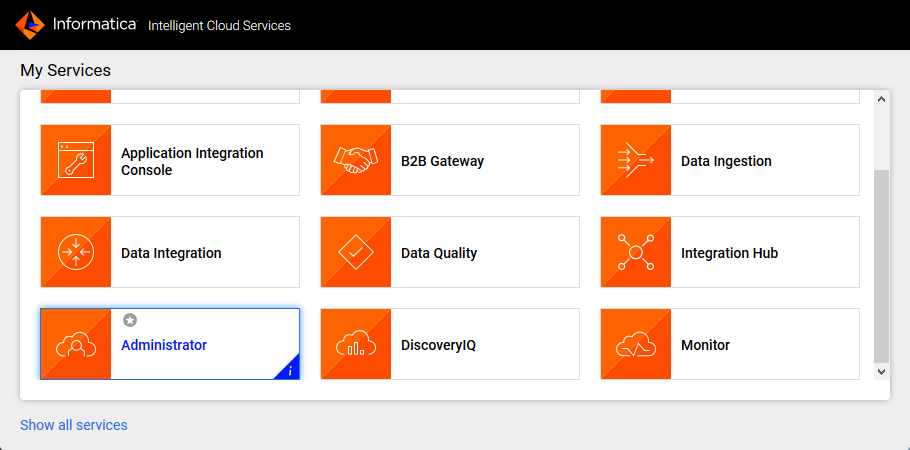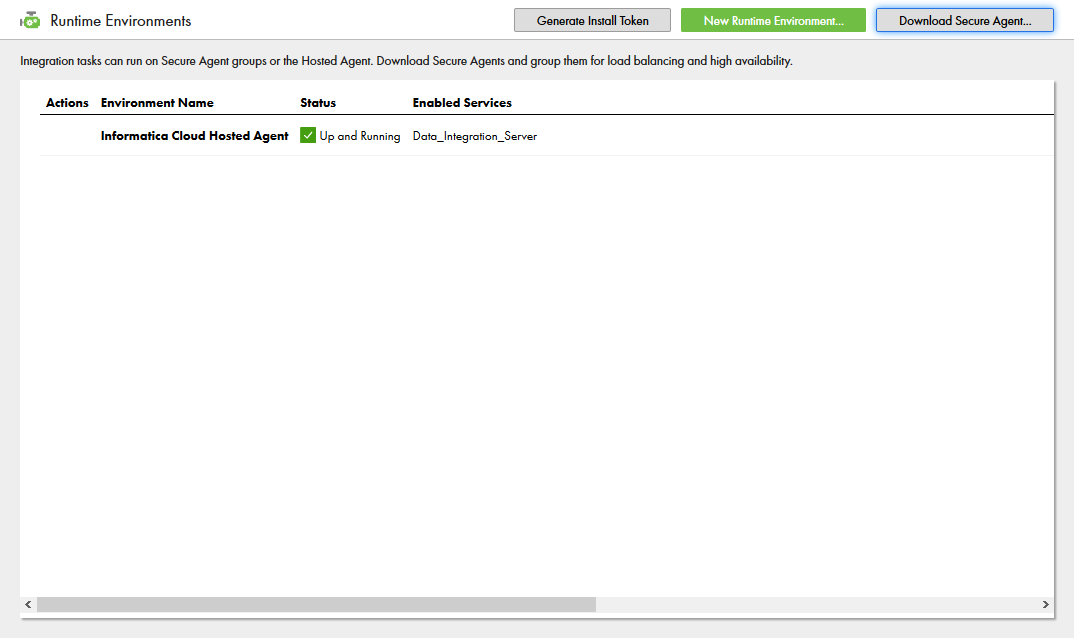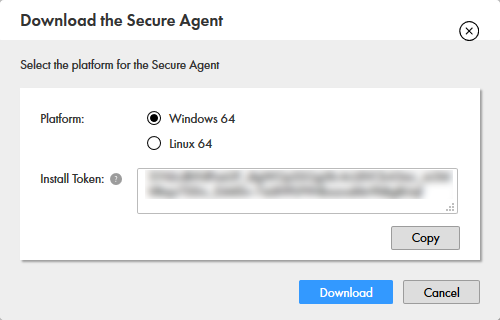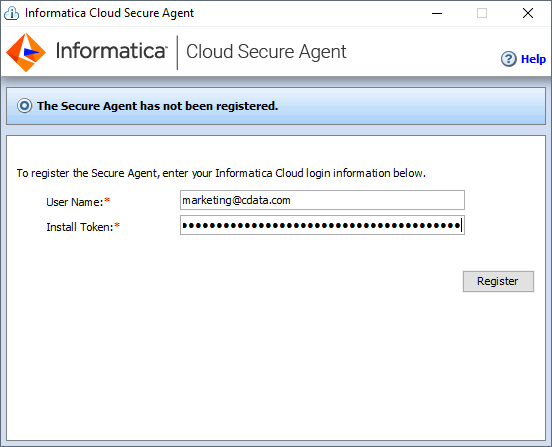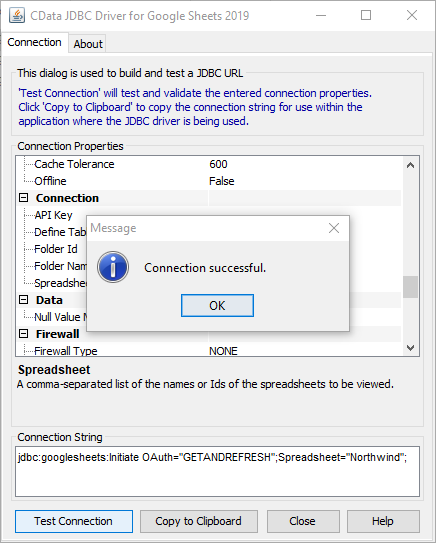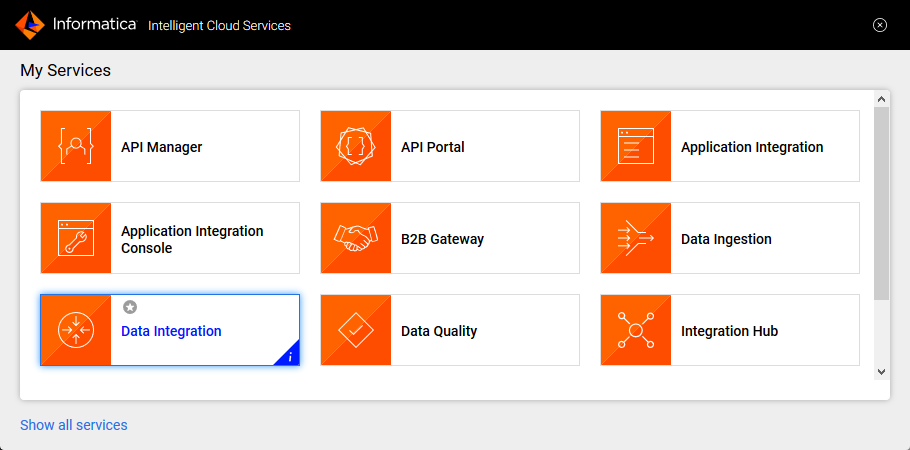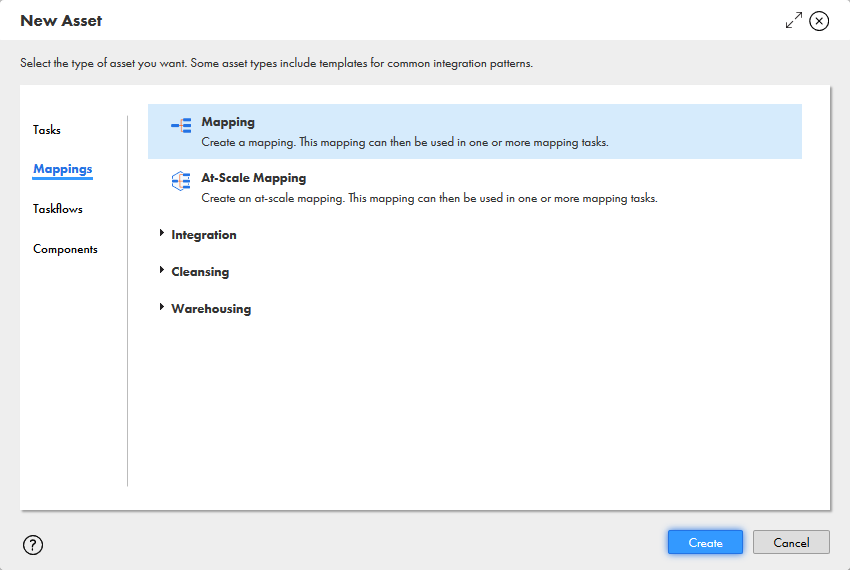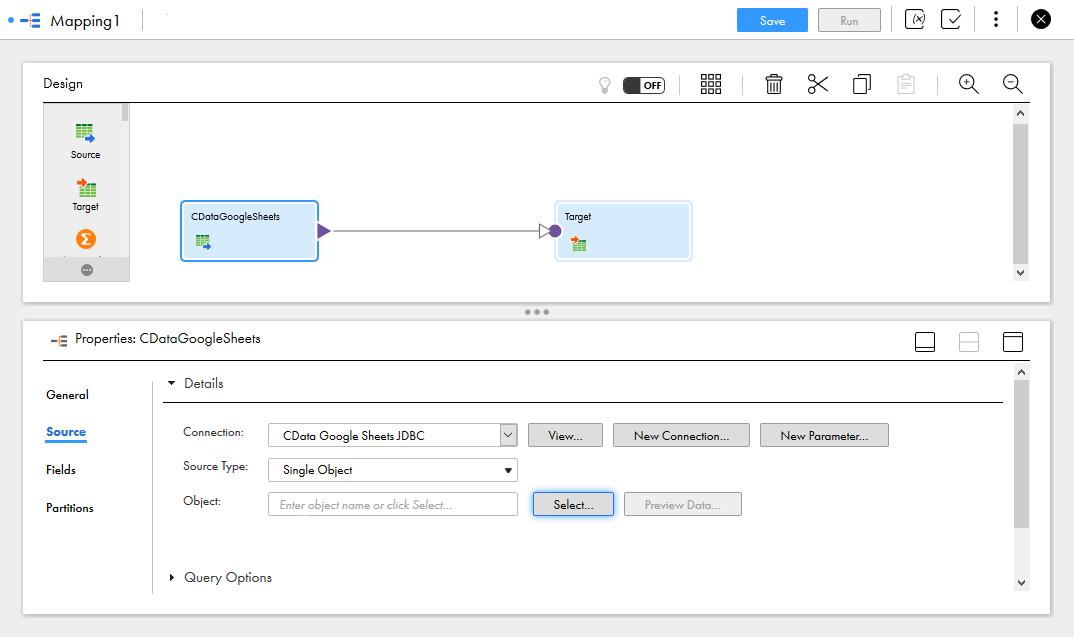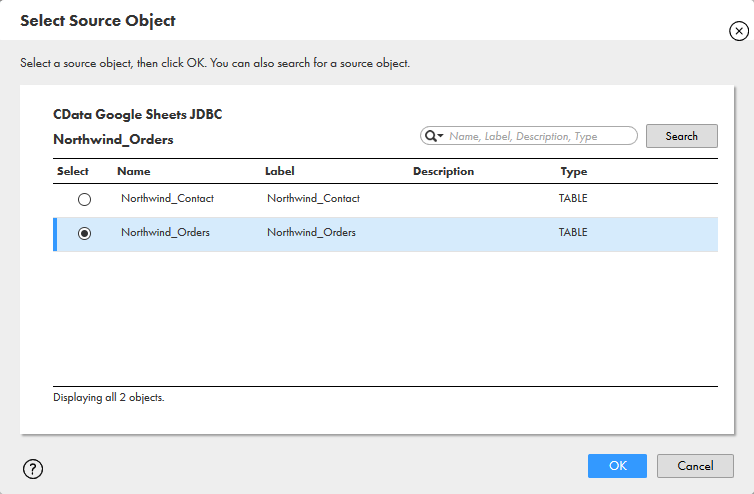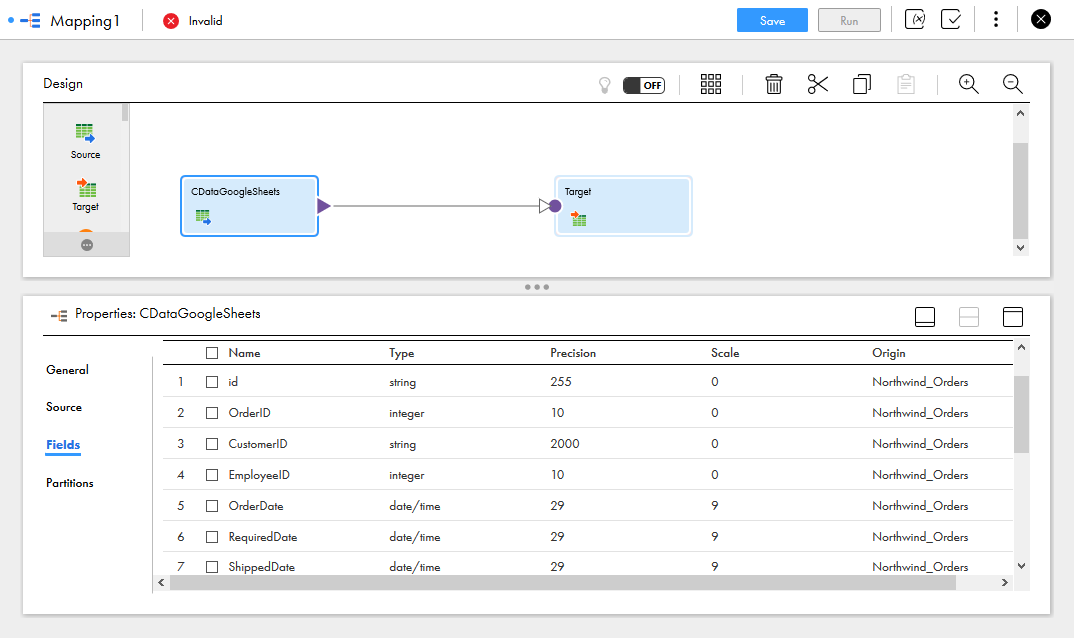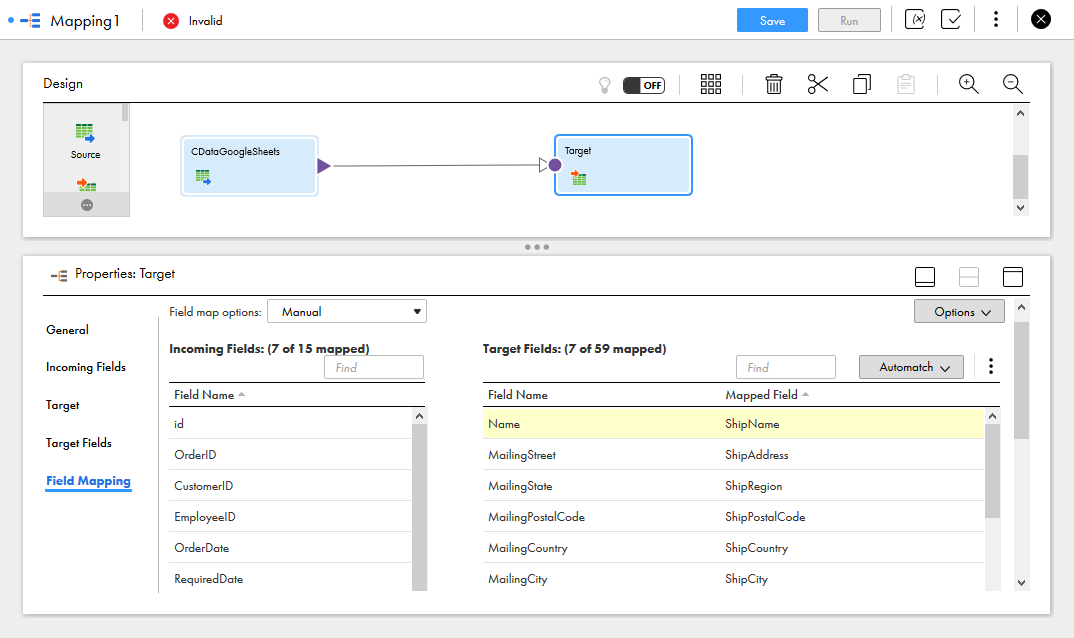Model Context Protocol (MCP) finally gives AI models a way to access the business data needed to make them really useful at work. CData MCP Servers have the depth and performance to make sure AI has access to all of the answers.
Try them now for free →Integrate Xero Data in Your Informatica Cloud Instance
Use CData JDBC drivers with the Informatica Cloud Secure Agent to access live Xero data from Informatica Cloud.
Informatica Cloud allows you to perform extract, transform, and load (ETL) tasks in the cloud. With the Cloud Secure Agent and the CData JDBC Driver for Xero, you get live access to Xero data, directly within Informatica Cloud. In this article, we will walk through downloading and registering the Cloud Secure Agent, connecting to Xero through the JDBC Driver and generating a mapping that can be used in any Informatica Cloud process.
About Xero Data Integration
Accessing and integrating live data from Xero has never been easier with CData. Customers rely on CData connectivity to:
- Connect to Xero Accounts and both US and Australian Payroll APIs.
- Read, write, update, and delete ServiceNow objects like Customers, Transactions, Invoices, Sales Receipts and more.
- Use SQL stored procedures for actions like adding items to a cart, submitting orders, and downloading attachments.
- Work with accounting, payroll, file, fixed asset, and project data.
Customers regularly integrate their Xero data with preferred tools, like Tableau, Qlik Sense, or Excel, and integrate Xero data into their database or data warehouse.
Getting Started
Informatica Cloud Secure Agent
To work with the Xero data through the JDBC Driver, install the Cloud Secure Agent.
- Navigate to the Administrator page in Informatica Cloud
![]()
- Select the Runtime Environments tab
- Click "Download Secure Agent"
![]()
- Make note of the Install Token
![]()
- Run the installer on the client machine and register the Cloud Secure Agent with your username and install token
![]()
NOTE: It may take some time for all of the Cloud Secure Agent services to get up and running.
Connecting to the Xero JDBC Driver
With the Cloud Secure Agent installed and running, you are ready to connect to Xero through the JDBC Driver.
Adding the JDBC Driver to the Secure Agent Machine
- Navigate to the following directory on the Secure Agent machine:
%Secure Agent installation directory%/ext/connectors/thirdparty/ - Create a folder and add the driver JAR file (cdata.jdbc.xero.jar) based on the type of mapping that you want to configure.
For mappings, create the following folder and add the driver JAR file:
informatica.jdbc_v2/commonFor mappings in advanced mode, also create the following folder and add the driver JAR file:
informatica.jdbc_v2/spark - Restart the Secure Agent.
Connecting to Xero in Informatica Cloud
After installing the driver JAR file, you are ready to configure your connection to Xero in Informatica Cloud. Start by clicking the Connections tab and clicking New Connection. Fill in the following properties for the connection:- Connection Name: Name your connection (i.e.: CData Xero Connection)
- Type: Select "JDBC_V2"
- Runtime Environment: Select the runtime environment where you installed the Secure Agent
- JDBC Driver Class Name: The name of the JDBC driver class: cdata.jdbc.xero.XeroDriver
- JDBC Connection URL: Set this to the JDBC URL for Xero. Your URL will look similar to the following:
jdbc:xero:InitiateOAuth=GETANDREFRESH;To connect, set the Schema connection property in addition to any authentication values. Xero offers authentication for private applications, public applications, and partner applications. You will need to set the XeroAppAuthentication property to PUBLIC, PRIVATE, or PARTNER, depending on the type of application configured. To connect from a private application, you will additionally need to set the OAuthAccessToken, OAuthClientId, OAuthClientSecret, CertificateStoreType, CertificateStore, and CertificateStorePassword.
To connect from a public or partner application, you can use the embedded OAuthClientId, OAuthClientSecret, and CallbackURL, or you can register an app to obtain your own OAuth values.
See the "Getting Started" chapter of the help documentation for a guide to authenticating to Xero.
Built-In Connection String Designer
For assistance in constructing the JDBC URL, use the connection string designer built into the Xero JDBC Driver. Either double-click the .jar file or execute the .jar file from the command-line.
java -jar cdata.jdbc.xero.jarFill in the connection properties and copy the connection string to the clipboard.
![Using the built-in connection string designer to generate a JDBC URL (Google Sheets is shown.)]()
- Username: Set this to a placeholder value (since Xero does not require a username)
- Password: Set this to a placeholder value (since Xero does not require a password)
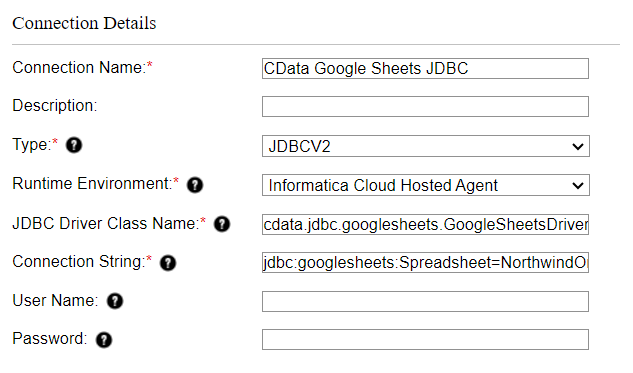
Create a Mapping for Xero Data
With the connection to Xero configured, we can now access Xero data in any Informatica process. The steps below walk through creating a mapping for Xero to another data target.
- Navigate to the Data Integration page
![]()
- Click New.. and select Mapping from the Mappings tab
![]()
- Click the Source Object and in the Source tab, select the Connection and set the Source Type
![Selecting the Source Connection and Source Type]()
- Click "Select" to choose the table to map
![Selecting the Source Object]()
- In the Fields tab, select the fields from the Xero table to map
![Selecting Source Fields to map]()
- Click the Target object and configure the Target source, table and fields. In the Field Mapping tab, map the source fields to the target fields.
![Selecting the Target Field Mappings]()
With the mapping configured, you are ready to start integrating live Xero data with any of the supported connections in Informatica Cloud. Download a free, 30-day trial of the CData JDBC Driver for Xero and start working with your live Xero data in Informatica Cloud today.

